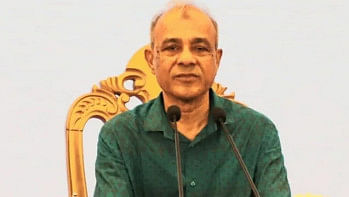Can we live up to that ranking?

According to a new analysis published by the Centre for Economic and Business Research (CEBR), a UK-based Research firm, the country is set to become the 24th largest economy over the next 15 years. In 2018, the Bangladeshi economy was ranked as the 43rd largest economy in the globe due to its consistent and high rates of economic growth. Indeed, we jumped two points ahead from 2017 and CEBR expects the "annual rates of GDP growth to average 7.0 percent between 2018 and 2033."
The World Economic League Table (WELT) 2019 is a forecast of the size of 193 economies in the world. The research study predicts that the Bangladesh economy (GDP) will reach USD 1.05 trillion (at current prices) in 2033 from the year 2018. The economy is being propelled forward thanks primarily to robust exports, and the duty-free access to the Indian market has helped. When we take into account the fact that global retailers are increasingly opening up shop in India, the Bangladeshi readymade garments (RMG) industry is well positioned to take full advantage of the situation as stated in the report: "the duty-free access to the Indian market, pushing exports to USD 375 million in the three months to September."
The economy has benefitted from a range of policy initiatives that has driven up domestic consumption expenditure, government spending, remittances and exports. The sustained efforts of the government in upgrading physical infrastructure and increasing power generation cannot be overstated, although questions remain about quality of megaprojects and reliability of power. As per a report published in this paper on January 8, the country has become the second biggest economy in South Asia (India ranked 5th, Pakistan 44th, Sri Lanka 66th, Nepal 101st, Afghanistan 115th, the Maldives 156th, and Bhutan 166th, in the WELT 2019).
While we have discussed primarily the good news, it is necessary to see what major policy decisions the government will have to take to lift Bangladesh from its current ranking of 41st to the 24th biggest economy in 2033. One of the biggest challenges of the new government is how to increase revenues to finance the multi-billion dollar investments that will have to go into upgrading our infrastructure (on a year-to-year basis), while at the same time, maintaining the social safety nets that help the poor. The new finance minister has been talking about expanding the tax net beyond the major urban centres and that is a right policy decision, if it can be implemented. And there is no reason why it can't be should the political will exist.
The bleeding in the banking sector also has to be stemmed and that will require iron will. The billions of taka siphoned off by powerful business interest groups over the past decade has come at the cost of public money that should have gone as low-interest rate loans to millions of small proprietors and medium-sized businesses. Today, Bangladesh has emerged as the second largest RMG exporter (after China), but it is not without limitations. Low productivity, recurring labour unrest, poor infrastructure—in terms of slow movement of products on ports of exit (both air and sea)—are areas that have to be tackled head on.
For us to maintain our position in the global order of apparels, policy interventions will have to be implemented within set timelines and not be allowed to drag on year after year, which has become the case for many of our reforms. As the country gears up for major infrastructure projects, the sea ports (particularly Chittagong) must be upgraded to handle greater imports of capital machinery. We should not forget the fact that Bangladesh has also granted India the use of its ports—an essential component of regional connectivity, but which will nonetheless make greater demands on our port and other ancillary infrastructure.
The prediction for the Bangladesh economy reaching the 24th rank is of course dependent on a number of external factors too. The biggest of which, of course, is that emerging markets across the world are struggling "partly because of the monetary tightening in the US and the knock-on effect of the surging US dollar." For us, that means imports are going to become more expensive, particularly in terms of tricky consumables like oil. With about 40 percent of our power coming from oil-fired power plants, it doesn't require much imagination as to what a resurgent USD means for us because the advantage we've enjoyed thanks to a fall in price of international crude is being slowly eroded by a rising dollar. Is it not time for policymakers to revisit our production sharing contract model so that we can attract global energy companies to start exploring in earnest both our potential onshore and offshore hydrocarbon reserves? Or will we continue to stick our collective heads in the sand and ignore the reality of a dwindling proven gas reserve?
At the end of the day, the CEBR study gives us a glimpse of what is possible in terms of economic growth and what could potentially be major stumbling blocks for growth. Uncertainties will always exist when it comes to external factors, i.e. factors beyond our ability to influence or control, but we do have our work cut out when it comes to tackling domestic economic bottlenecks. As stated before, one of the greatest challenges will be to increase domestic revenue and that is where we should give a lot of focus. Without substantially expanding our domestic revenue channels (in particular tax revenue), it will become increasingly difficult to keep up the momentum of change that has made a 7 percent (per annum) annual growth a reality for Bangladesh.
Syed Mansur Hashim is Assistant Editor, The Daily Star.





Comments